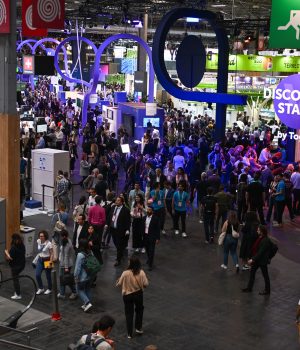Human beings are meant to be creative. Year after year, entrepreneurs and employees alike are constantly driven to transform the world around them into something new, useful, and impactful in both their careers and personal lives.
One problem we witness too often in society is the treatment of creativity and business innovation as mutually exclusive occurrences. Trust me when I say they are directly connected far more than the average person realizes.
Most notably, older organizations are the ones that place creativity in one column and positive disruptions via innovation in another. The fact that many Americans work for organizations that have been around for many decades makes this divide between creativity and innovation all the more concerning. For example, Citibank started as the City Bank of New York in 1812, making them over 200 years old!
The test of time
Older organizations, especially those as old as Citibank, have been through a lot. Some have been through the Great Depression, world wars, the Great Recession of 2007–09, and now, most recently, the coronavirus pandemic and subsequent economic downturn.
This can certainly be viewed as a positive feat: For a company like Citibank to withstand so many outside disruptions, they have to be doing something right! However, for many other older companies, being around for decades and in some cases, centuries, causes them to more quickly protect and defend the status quo. Longevity like that fosters the mindset of “this formula has been working for over a hundred years, why change it now?”
What many don’t realize is that as time has passed and the world has changed, their traditional products and services may continue to sell well, but the margins are much lower and there is much more competition. In turn, the company will blame this stagnation on age—believing that only new and fresh things sell these days—when the reality is the issue is lack of innovation. And why might a company lack innovation? It is because they have deprioritized creativity!
Anticipation can aid creativity
The age of your product, service, culture, and even your employees is not the problem. Corporate culture that has been in existence for a long time can work for you or against you, depending on the key values of that culture. If innovation, creativity, and change are important and these related behaviors are rewarded in some way, then an older organization can do well.
Let’s go back to our example of Citibank, for instance. Disruption of any kind, especially digital disruption and technological change, challenges companies in ways that often send them in two directions: one of agility, which we are all familiar with and only gets us so far, and one of anticipation, in which a company decides to pay attention to the Hard Trends shaping its industry both inside and out, and look to pre-solve future problems to creatively innovate and stay ahead of the curve.
For Citibank, a technological disruption came in 1975 when ATM machines exploded onto the banking scene, allowing individuals to withdraw their own money without the face-to-face contact with a teller needed prior.
Instead of only reacting, Citibank established a research center, which was a very early iteration of what would eventually become its first Innovation Lab in Dublin in 2009. This research center was intended to allocate finances to researching customer behaviors—both with these new machines and how they may behave—as technological advancements continued in the banking industry, up to and including the mobile banking we see today.
Often it takes a crisis to make us step back and rethink our products, services, and even our culture. When Citibank implemented my Anticipatory Organization Model, they took the opportunity to fund creativity by way of Innovation Labs, well aware that establishing a creative safe space such as an Innovation Lab fosters the ability for its team to solve customer problems before they even exist, anticipating customer needs and how they will evolve.
Keeping your organization comfortably creative
Citibank’s Innovation Labs are sure to keep them ahead of the curve, especially as blockchain technology develops further and disrupts the banking industry yet again, just as mobile deposits and ATMs have in the past.
To maintain a creative company, you must have creative individuals, but as a leader or a manager, you must be aware that, for many, creativity is a private endeavor. Some individuals are afraid of sharing their ideas for fear of judgment, or perhaps they’re afraid that they will not receive the credit they deserve if their idea is implemented.
How do you combat these fears? Citibank has traditionally kept its Innovation Labs separate from its corporate headquarters in an effort to provide a sense of privacy for those who work within said environment to openly create.
Think of how your organization can foster better creativity. Much like tactile art, sometimes it starts with a safe space, free of judgment. But remember, while a creative space and the traditional operations of your organizations can be separate, creativity and innovation cannot, and innovation will ultimately lead to anticipation!
For more business and entrepreneurship tips, subscribe to our weekly newsletter and follow us on Twitter, Facebook, Instagram and LinkedIn.



![Best startup accelerator programs in Europe [2025 Edition] alphagamma best startup accelerator programs in europe entrepreneurship](https://agcdn-1d97e.kxcdn.com/wp-content/uploads/2023/11/alphagamma-best-startup-accelerator-programs-in-europe-entrepreneurship-300x350.jpg)


